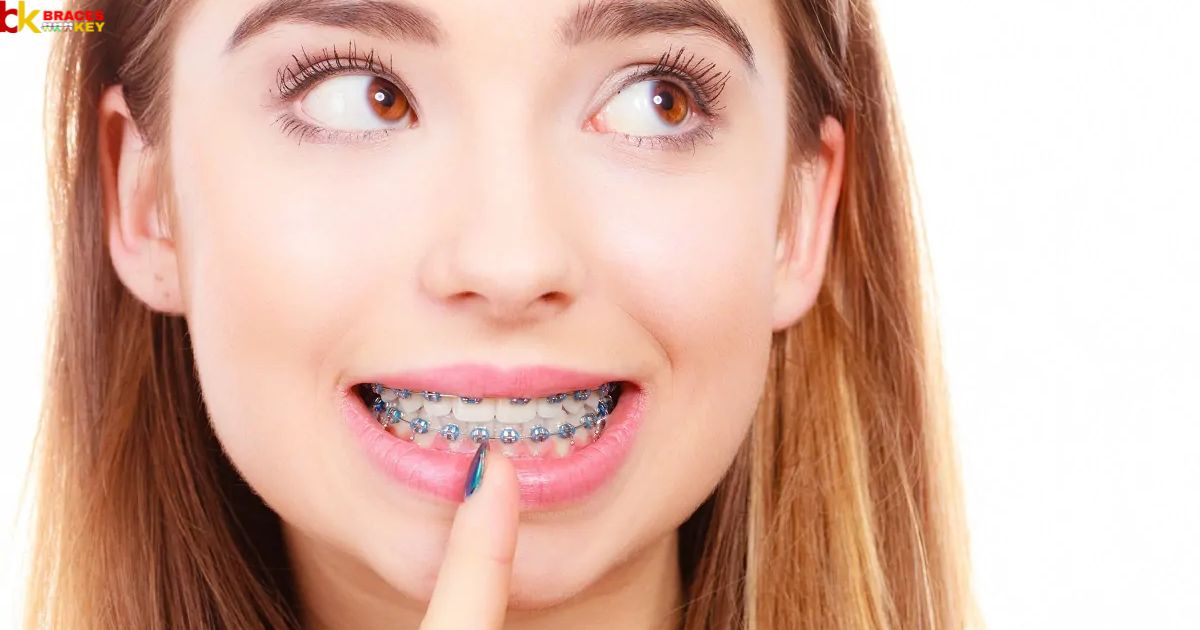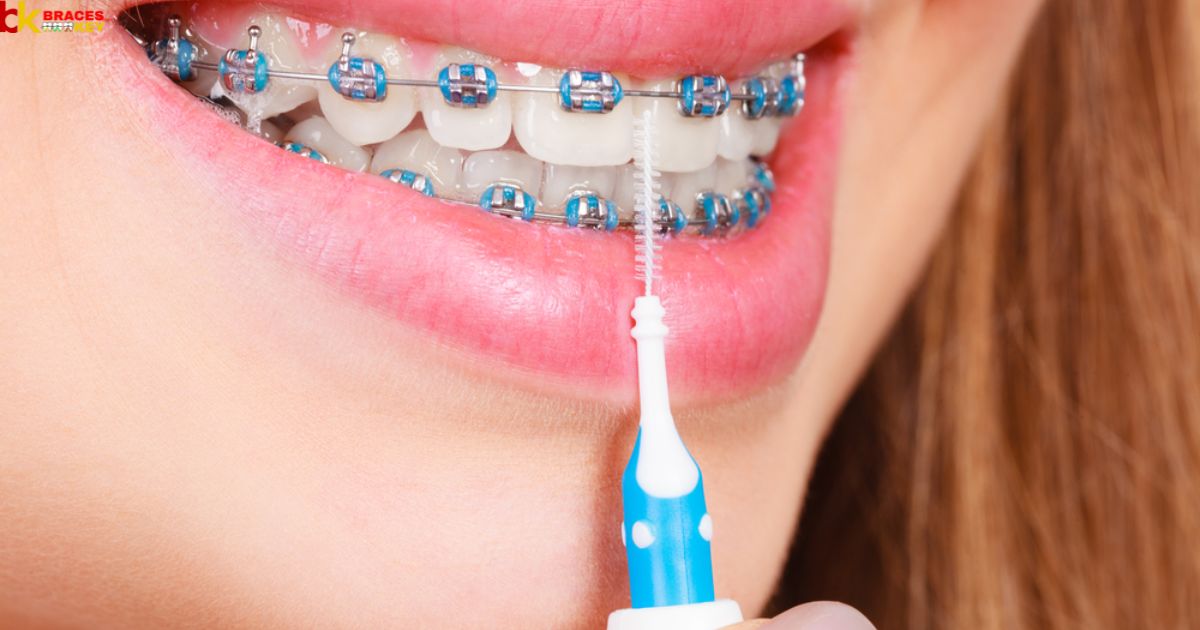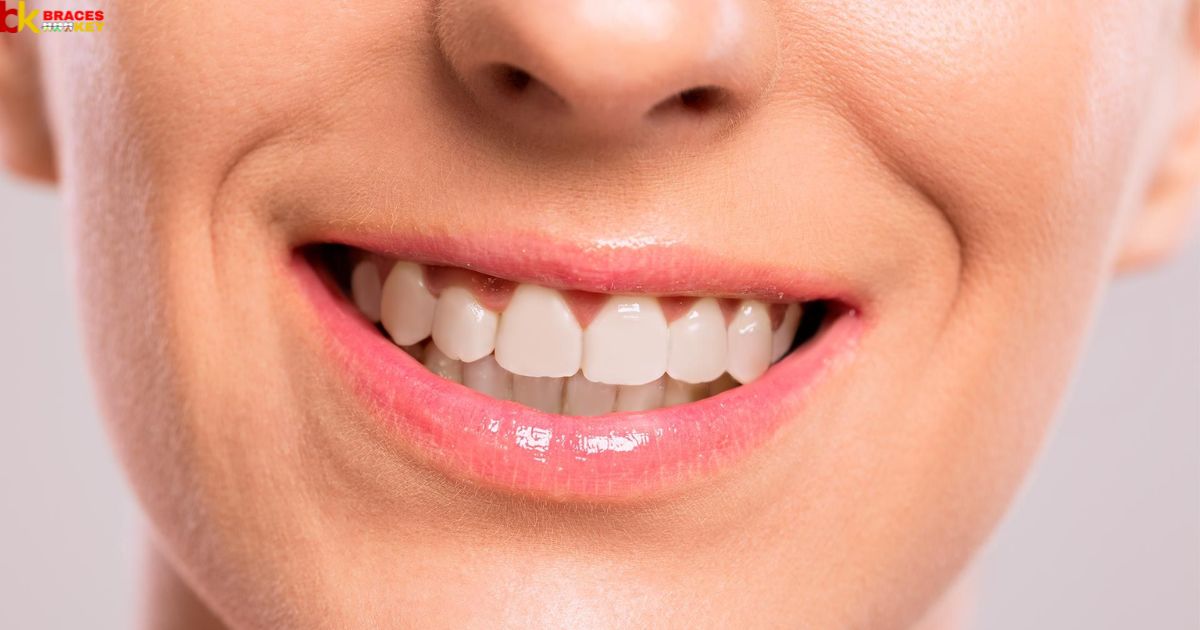Are you looking for ways to tighten your braces at home? Taking care of your braces is an essential part of your orthodontic treatment. While it is always recommended to consult with your orthodontist for adjustments, there are some techniques you can try at home to alleviate discomfort and promote proper alignment. In this guide, we will explore various methods to tighten your braces effectively and safely. From assessing the tightness of your braces to incorporating soft foods into your diet, we will provide you with practical tips and tricks. Remember, it is crucial to prioritize your oral health and consult a professional for guidance. So, let’s dive in and discover how you can tighten your braces at home.
- Regularly assess the tightness of your braces to maintain their effectiveness.
- Use orthodontic wax to alleviate discomfort caused by brackets and wires.
- Follow your orthodontist’s guidance when using elastic bands for brace tightness.
- Apply warm compresses to the affected area for pain relief.
Assessing the Tightness of Your Braces

Assessing the tightness of your braces involves checking for any discomfort or movement in the brackets and wires. It is important to regularly evaluate the tightness of your braces to ensure that they are effectively aligning your teeth. To assess brace tightness, use a mirror to inspect the brackets and wires for any signs of looseness or shifting. Gently bite down and move your jaw to check for any discomfort or unusual sensations.
If you notice any movement, discomfort, or if your braces feel looser than usual, it is important to consult your orthodontist. They will be able to adjust the brace tightness and make any necessary repairs to ensure that your treatment progresses smoothly. Regular assessments of brace tightness will help maintain the effectiveness of your orthodontic treatment and prevent any complications that may arise from loose or improperly fitting braces.
Using Orthodontic Wax for Comfort
To enhance comfort while wearing braces, orthodontic wax can be applied to alleviate any discomfort caused by brackets and wires. Orthodontic wax is a soft and pliable material that can be easily molded and placed over the brackets or wires that are causing irritation or soreness. The wax acts as a barrier between the braces and the soft tissues of the mouth, preventing friction and reducing the chance of developing sores or ulcers. To use orthodontic wax, simply pinch off a small amount and roll it into a ball.
Then, press the wax onto the bracket or wire that is causing discomfort, smoothing it out to create a protective layer. It is important to replace the wax as needed throughout the day for maximum comfort. Additionally, using dental floss for braces can help remove food particles that may become trapped, improving overall comfort. Lastly, if you participate in sports or other physical activities, wearing a mouthguard for braces can help protect your teeth and braces from potential damage.
Using Elastic Bands to Adjust Brace Tightness
One method to adjust the Tightness of Braces at home is by utilizing elastic bands. These bands, also known as ligatures, are small rubber bands that can be placed around the brackets of your braces to apply pressure and shift the position of your teeth. However, it is important to note that using elastic bands to adjust brace tightness should only be done under the guidance of your orthodontist. They will provide you with the appropriate size and type of bands to use, as well as instructions on how to properly place them.
It is crucial to follow these instructions carefully to avoid causing damage to your braces or teeth. If you are looking for alternative options to adjust your braces at home, it is best to consult with your orthodontist to determine the safest and most effective approach. DIY braces tightening can lead to complications and should be avoided.
Applying Warm Compresses for Pain Relief
Applying warm compresses can provide pain relief for individuals with braces. Heat therapy has been shown to help alleviate discomfort by increasing blood flow and relaxing muscles. By using warm compresses, patients can experience relief from the pain associated with braces without having to visit their orthodontist.
Heat for Braces Pain
The effective use of warm compresses can provide pain relief for individuals experiencing braces pain. Heat therapy is a common alternative pain relief technique that can help soothe discomfort and reduce inflammation. Here are three reasons why applying warm compresses is beneficial for braces pain:
- Increased blood flow: Heat helps to improve circulation, which can promote the delivery of oxygen and nutrients to the affected area. This increased blood flow can aid in the healing process and alleviate pain.
- Muscle relaxation: Warm compresses can help relax the muscles around the braces, reducing tension and easing discomfort. This can be particularly helpful for individuals experiencing jaw or facial pain associated with braces.
- Pain reduction: Applying heat to the site of pain can help to block pain signals and provide temporary relief. It can also help to distract from the discomfort by providing a soothing sensation.
Warm Compress Benefits
Warm compresses offer several benefits for individuals experiencing braces pain. Heat therapy, in the form of warm compresses, can be effective in providing pain relief and managing discomfort caused by braces. Applying a warm compress to the affected area helps to increase blood circulation, relax the muscles, and alleviate tension. The heat from the compress can also help to reduce inflammation and swelling, further aiding in pain management.
Additionally, warm compresses can promote a soothing and calming effect, providing comfort to those undergoing orthodontic treatment. It is important to note that warm compresses should be applied for short periods of time and not be too hot to avoid burns or further irritation. Incorporating warm compresses into a daily routine can be a simple yet effective way to alleviate braces pain and promote overall well-being during orthodontic treatment.
Home Pain Relief
One effective method for relieving braces pain at home is by incorporating warm compresses into your pain relief routine. Applying warm compresses to the affected areas can help alleviate discomfort and reduce inflammation. Here are three reasons why using warm compresses as a home remedy for braces pain can be beneficial:
- Increased blood circulation: The warmth from the compress improves blood flow to the affected areas, promoting faster healing and reducing pain.
- Muscle relaxation: Warm compresses can help relax the muscles around your braces, easing tension and providing relief from soreness.
- Natural pain relief: Warmth has a soothing effect on the body, triggering the release of endorphins, which are natural painkillers.
Using warm compresses as a DIY solution for braces pain is a simple and cost-effective way to find relief at home. Incorporating this home remedy into your pain management routine can complement other techniques and enhance your overall comfort during orthodontic treatment.
Using Interdental Brushes for Tighter Braces

Using interdental brushes can be an effective method for achieving tighter braces. These brushes are specifically designed to clean the spaces between teeth and around braces, removing plaque and food particles that can cause discomfort and looseness. To ensure proper technique, it is important to use the brushes gently and in a back-and-forth motion, without applying excessive force that could damage the braces or gums.
Interdental Brush Effectiveness
The effectiveness of interdental brushes in achieving tighter braces has been widely recognized in the orthodontic community. These small, flexible brushes are designed to clean the spaces between teeth and braces, where traditional toothbrushes and floss may not reach. Here are three reasons why interdental brushes are considered effective for achieving tighter braces:
- Improved plaque removal: Interdental brushes are able to remove plaque and food particles from hard-to-reach areas, reducing the risk of gum disease and tooth decay.
- Gentle on braces: Interdental brushes are designed to be gentle on braces, allowing for effective cleaning without causing damage to the wires or brackets.
- Convenience and ease of use: Interdental brushes are easy to use and can be conveniently carried in a pocket or purse. They provide a quick and efficient way to clean between teeth and braces, promoting oral health and helping to achieve tighter braces.
While interdental brushes are an effective tool, it’s important to consider individual preferences and consult with an orthodontist for any alternative options or specific concerns.
Proper Technique for Braces
To achieve tighter braces, it is essential to employ the proper technique for using interdental brushes. These brushes are designed to effectively clean the spaces between your teeth and braces, helping to remove any food particles or plaque that may have accumulated. By incorporating interdental brushes into your daily oral hygiene routine, you can also assess the tightness of your braces and identify any areas that may require adjustment. When using interdental brushes, it is important to follow these steps:
- Choose the correct size brush for your teeth and braces.
- Gently insert the brush between each tooth and the wire of your braces.
- Move the brush back and forth to remove debris.
- Rinse the brush after each use and replace it regularly.
Incorporating Soft Foods Into Your Diet
When incorporating soft foods into your diet while wearing braces, it is important to choose options that are gentle on your teeth and easy to chew. Here are three soft food alternatives that you can enjoy while maintaining oral hygiene:
- Soups and broths: These warm and comforting options are not only easy to eat but also provide essential nutrients. Opt for clear or pureed soups that do not contain chunks of ingredients that may get stuck in your braces.
- Smoothies and milkshakes: These refreshing beverages are a great way to incorporate fruits and vegetables into your diet. Blend them with yogurt or milk for added creaminess and protein.
- Soft cooked grains: Foods like oatmeal, rice, and quinoa are soft and easy to chew. They can be cooked until tender and enjoyed with added flavors such as cinnamon or honey.
Practicing Proper Oral Hygiene for Braces
Incorporating soft foods into your diet while wearing braces is essential for maintaining oral hygiene, but it is equally important to practice proper oral hygiene for braces to ensure optimal dental health. Brushing and flossing become even more crucial with braces, as food particles can easily get trapped and lead to plaque buildup and tooth decay. Here are some tips for maintaining oral health while wearing braces:
| Oral Hygiene Practices for Braces | Frequency | Tools | Additional Tips |
|---|---|---|---|
| Brushing | After every meal and snack | Soft-bristled toothbrush | Use fluoride toothpaste and brush in small circular motions |
| Flossing | Daily | Floss threader or orthodontic flosser | Be gentle and thread floss between teeth and under wires |
| Mouthwash | Daily | Antiseptic mouthwash | Rinse for 30-60 seconds to kill bacteria |
| Orthodontic Wax | As needed | Wax strips | Apply wax to brackets or wires for added comfort |
Remember to schedule regular check-ups with your orthodontist to assess progress and make any necessary adjustments. By practicing proper oral hygiene, you can maintain the health of your teeth and gums throughout your braces journey.
Trying Rubber Bands to Align Your Teeth
Practicing proper oral hygiene for braces is crucial, and another method to help align your teeth at home is by trying rubber bands. While rubber bands may not be as effective as professional orthodontic treatment, they can provide some benefits for teeth alignment. Here are three reasons why you might consider using rubber bands:
- Cost-effective: Rubber bands are an affordable alternative to expensive orthodontic procedures. They can be easily purchased at most drugstores or online.
- Easy to use: Applying rubber bands to your braces is a simple process that can be done at home. Your orthodontist can provide instructions on how to attach them properly.
- Supplemental treatment: Rubber bands can be used alongside your regular orthodontic treatment to enhance the alignment process. They can help correct bite issues and improve the overall effectiveness of braces.
While rubber bands can be a helpful tool for teeth alignment, it’s important to remember that seeking professional advice and guidance is crucial for achieving optimal results.
Seeking Professional Advice and Guidance
To ensure the best possible results and avoid any potential complications, it is essential to consult with a professional orthodontist regarding the use of rubber bands or any other at-home methods for tightening braces. Seeking professional advice and guidance is crucial in order to ensure that your braces are being adjusted correctly and safely. Orthodontists have the necessary expertise and experience to evaluate your specific case and provide personalized recommendations.
They will assess your progress, make necessary adjustments, and monitor any changes in your treatment plan. Additionally, they can provide guidance on how to use orthodontic wax for comfort and alleviate any discomfort you may experience. By seeking professional advice, you can ensure that your braces are being tightened appropriately and that your treatment progresses smoothly.
| Professional Advice | Guidance | Orthodontic Wax Comfort |
|---|---|---|
| Expert evaluation | Personalized recommendations | Comfort during treatment |
| Progress monitoring | Adjustments to treatment plan | Alleviates discomfort |
| Safe and effective adjustments | Ensures correct brace tightness | Promotes a smooth treatment journey |
FAQ’s
Can I Use DIY Methods to Tighten My Braces at Home?
DIY braces tightening and homemade braces adjustments are not recommended. Orthodontic treatment should be done by a professional to ensure safety, effectiveness, and proper alignment. Attempting to tighten braces at home can lead to complications and may require additional dental work.
Are There Any Risks or Potential Complications Associated With Tightening Braces at Home?
Tightening braces at home may pose significant risks and potential complications. Improper tightening can result in damage to the teeth, gums, and surrounding tissues. It is crucial to seek professional orthodontic care to ensure safe and effective treatment.
How Often Should I Tighten My Braces at Home?
The frequency of tightening braces at home is an important consideration. It is advisable to consult with your orthodontist to determine how long you should wait between adjustments and whether it is safe to adjust the tightness on your own.
Can I Use Over-The-Counter Pain Medications to Alleviate Discomfort Caused by Tightened Braces?
When experiencing discomfort from tightened braces, alternatives to over-the-counter medications include using ice packs for pain relief. This method can provide temporary relief and should be used as directed by your orthodontist.
Are There Any Alternative Methods to Tighten Braces if I’m Unable to Visit a Professional?
When unable to visit a professional, it is important to prioritize safety and consult with an orthodontist for DIY alternatives to tighten braces. This ensures the proper adjustments are made, reducing the risk of complications or damage to the teeth and gums.
Conclusion
In conclusion, there are several ways to tighten your braces at home, such as using orthodontic wax, elastic bands, warm compresses, interdental brushes, and incorporating soft foods into your diet. It is important to practice proper oral hygiene and seek professional advice when needed. By following these tips, you can help ensure that your braces are properly tightened and your orthodontic treatment progresses smoothly. So, why wait? Start taking control of your braces today and achieve the smile you’ve always wanted. Learn more “How to Check Graphics Card?“








